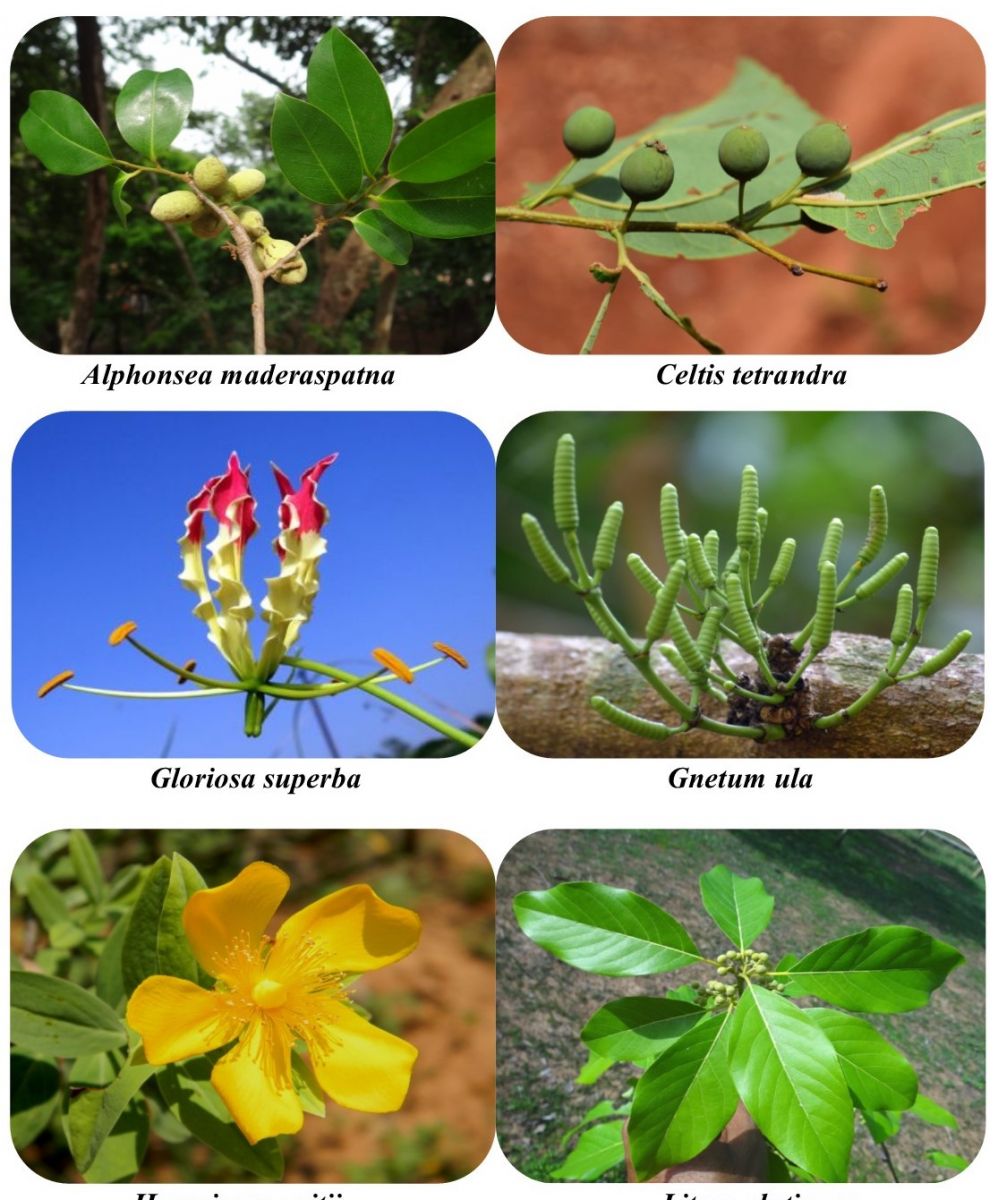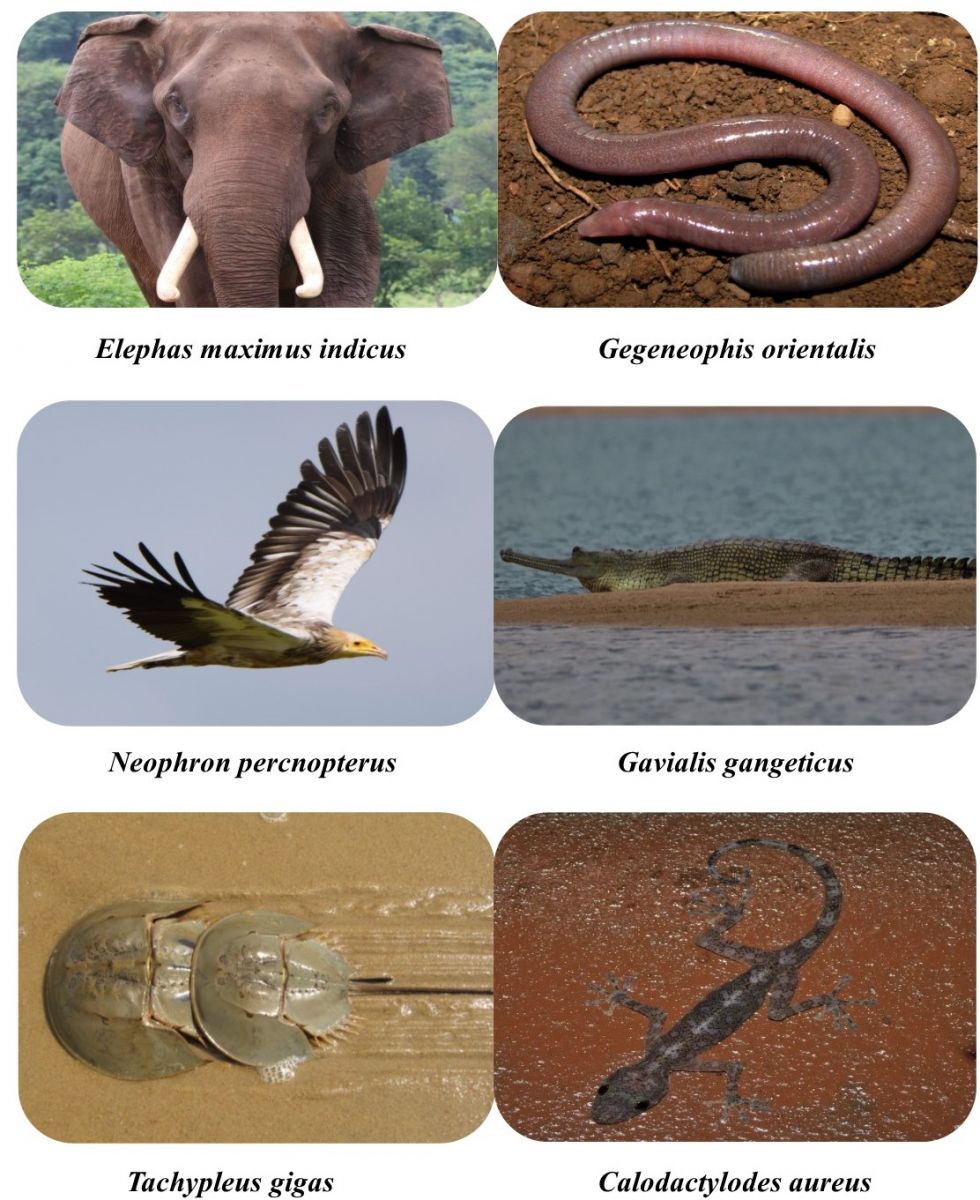BIODIVERSITY OF ODISHA
Biodiversity or Biological Diversity is defined as the variability among living organisms which includes floral, faunal and microbial diversity. Odisha's unique location in Peninsular India has blessed it with an interesting assemblage of floral and faunal diversity. Odisha state is situated on the east coast of the country, it covers an area of 1,55,707 sq. km which is 4.74% of the geographical area of the country. The State lies between 17°47'N to 22°34'N latitude and 81°22'E to 87°29'E longitude and shares border with West Bengal, Jharkhand in the north, Chhattisgarh in the west, Andhra Pradesh in the south and Bay of Bengal in the east. Physiographically, the State can be divided into four regions, viz, Northern Plateau, Eastern Ghats, Central Tableland, and Coastal Plains. The annual rainfall ranges between 1,200 mm to 1,600 mm and the annual temperature varies from 12°C to 42°C. The State is drained by many important rivers, which include Subarnarekha, Brahmani, Baitarni, Mahanadi, Devi, and Rushikulya. The State has 30 districts, among which 12 are tribal districts. Being situated in the Eastern part of India covering three biogeographic provinces, the state of Odisha is bestowed with various natural ecosystems like agrarian, forests, wetlands, and grasslands. About 37% of the state’s geographical area is covered with forests and is credited with five of the sixteen major forest types occurring in India. Primarily, major forests are Northern tropical semi-evergreen forest, tropical moist deciduous forest or monsoon forest, Tropical dry deciduous forest, and Tidal mangrove forest. The important aromatic plants include Kiya (Pandanus fascicularis), Sal (Shorea robusta), Vetiver (Vetiveria zizanioides), Wild lemongrass, and Hyptiss wavelns. Odisha is the second-largest Non-Timber Forest Producing state in India and 37% of its population depend on Non-Timber Forest Produces like leaves, tubers, seeds, fruits, mushrooms, and medicinal plants for their day to day requirements and up to 40% of the income of the rural people comes from the selling of forest products.
To protect and conserve the fragile natural resources, the state government has created 19 wildlife sanctuaries, one national park and one proposed national park, one biosphere reserve, and two Tiger Reserves in the entire state. These Protected Areas comprise 10.37% of the total forest area and 4.1% of the total geographical area of Odisha. Natural barriers like the mangroves and their associate, the sand dunes, the seaweeds and seagrasses, the screw pines, the Casuarinas, and the cashew plantations together formed a coastal bio-shield and protects the Odisha coast from natural calamities.
The state is an abode for over 5174 species of plants and fungi including 2800 species of higher plants together with 300 species of grasses, 153 species of orchids, 178 species of pteridophytes, 22 species of gymnosperms, 63 species of mangroves and their associates, 24 species of seaweeds, 7 species of seagrasses, 17 species of carnivorous plants. About 300 species of bryophytes, 275 species of lichens, and above 1000 species of fresh, marine, and brackish water algae contributes to cryptogam diversity. Thirty species of wild edible mushrooms and above 450 species of macro-fungi, 300 species of wild relatives of crop plants, and 500 species of medicinal plants also occur in Odisha. Around 117 plant species including 41 medicinal plant species of the state are considered as threatened and 24 species are endemic to Odisha, out of it 7 species each are orchids and grasses. While Saraca asoca and Symplocos recemosa comes under critically endangered category, Litsea glutinosa, Oroxylum indicum, Blepharispermum subsessile, and Embelia ribes are becoming endangered in the state. To protect the medicinal plants of Odisha, 8 Medicinal Plant Conservation Areas have been created.
Odisha is having unique biogeographic features, which supports a large diversity of animals. The faunal resources comprise 114 species of Mammals (103 wild and 11 domestic), 537 species of Birds, 131 species of Reptiles, 29 species of Amphibians, about 800 species of Pisces, 584 species of Crustaceans, 366 species of Molluscs, 259 species of Coleoptera, 98 species of Diptera, 265 species of Hymenoptera, 112 species of Spider, about 300 species of Lepidoptera, 102 species of Odonata and 31 species of Isopteran. A total of 65 globally threatened faunal species are reported to occur in the state which includes 26 species of birds, 20 species of mammals, 18 species of reptiles, and one species of fish.
Local communities have been engaged themselves in protecting many plant and animal taxa in different parts of the state. Conservation of Blackbuck in Bhetnoi- Balipadar of Buguda block in Ganjam, protection of endemic Mahseer fish of Mahanadi at Huma and Maneswar in Sambalpur, conservation of tortoise in Gajapati and conservation of fresh water turtles in Champeswar, Athgarh and Golia in Ganjam are some of the examples. The three mass nesting beaches of Olive Ridley Sea turtles including Gahirmatha, Devi, and Rushikulya located along the Odisha coast are of great significance. Living fossils such as two species of Horseshoe crab (Tachypleus gigas and Carcinoscorpius rotundicauda) widely found along the Odisha coast may have existed long before the arrival of dinosaurs. Three Elephant Reserves, 8 important bird areas, several thousands of sacred grooves of the state have immensely contributed to wildlife conservation in Odisha. Endangered Irrawaddy dolphins and lakhs of migratory birds of Chilika Lake, saltwater crocodile (Crocodylusporosus) of Bhitarkanika, Muggers of Similipal and Gharials of Tikarpara have international repute. A place like Bhitarkanika, Chilika (Nalabana), and Manglajodi is heaven for birds during the winter season and numerous winter migratory species visit annually. Besides these, shorebirds along the coast, different decapods, dragonflies, damselflies, butterflies, sand wasp in sand dune sites are of utmost wildlife importance.
Agricultural biodiversity is an important component of general biodiversity which includes all variety and variability of animals, plants, micro-organisms and ecosystems which are necessary to sustain key functions of the agroecosystem, its structure and processes for food production and food security. Biodiversity is tightly linked to agriculture and its various components. Various plants, animals and numerous microorganisms are closely associated with the agro-ecosystem and help agricultural crops in every stage such as production, protection and improvement.
The diverse agro-climatic zones of the state favor cultivation of several crop varieties of which rice, pulses, oilseeds, jute, sugarcane, coconut, wheat, small millets, bajra, arhar, groundnut, castor, linseed, cashew and turmeric are of great significance. Several varieties of turmeric from Kandhamal district, Millets of Koraput and Maize of Gajapati district are of special importance at the national and international market. Tuber crops like Taro, Elephant Foot Yam, Greater Yam and Sweet potato are cultivated in the tribal belts of Odisha are the major source of livelihood for them. Being the secondary center of origin of cultivated rice, Odisha has the distinction of possessing about 15,000 traditional rice varieties out of 50,000 found in the world. Acknowledging the years of efforts of tribal people in conserving 130 varieties of indigenous cultivars of rice, Koraput district was declared as a Globally Important Agricultural Heritage System by Food and Agricultural Organization (FAO) in 2012.
Similarly, around 41 different indigenous breeds of domestic animal and birds including the Ghumsuri cattle, Chilika buffalo, Ganjam goat, Kendrapada sheep, etc are designated breeds for Odisha. About 22 such breeds have been registered in the National Bureau of Animal Genetic Resource, New Delhi. These indigenous breeds need to be protected and conserved to develop new and more improved varieties of domesticated animals in the future.


